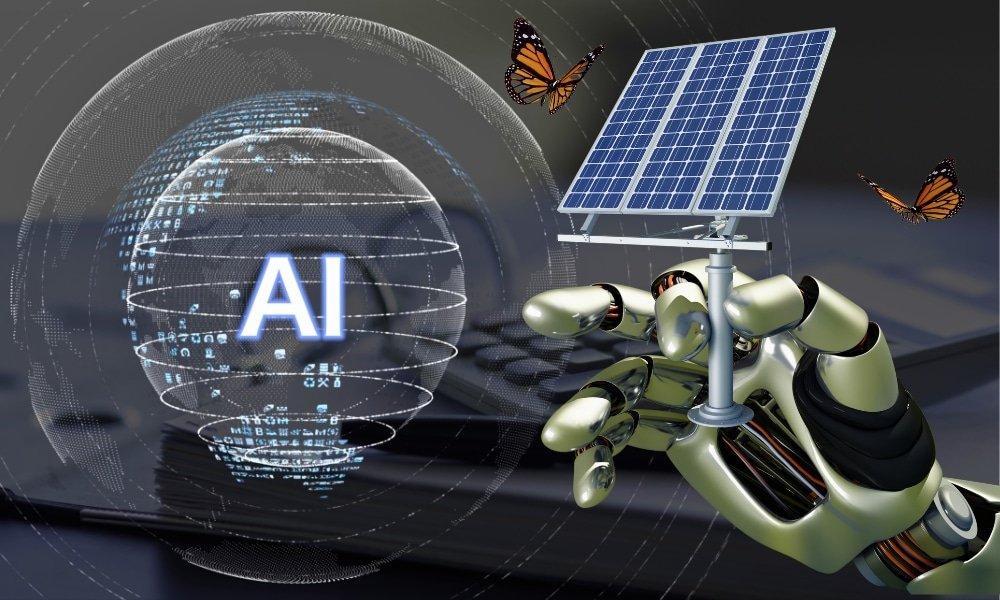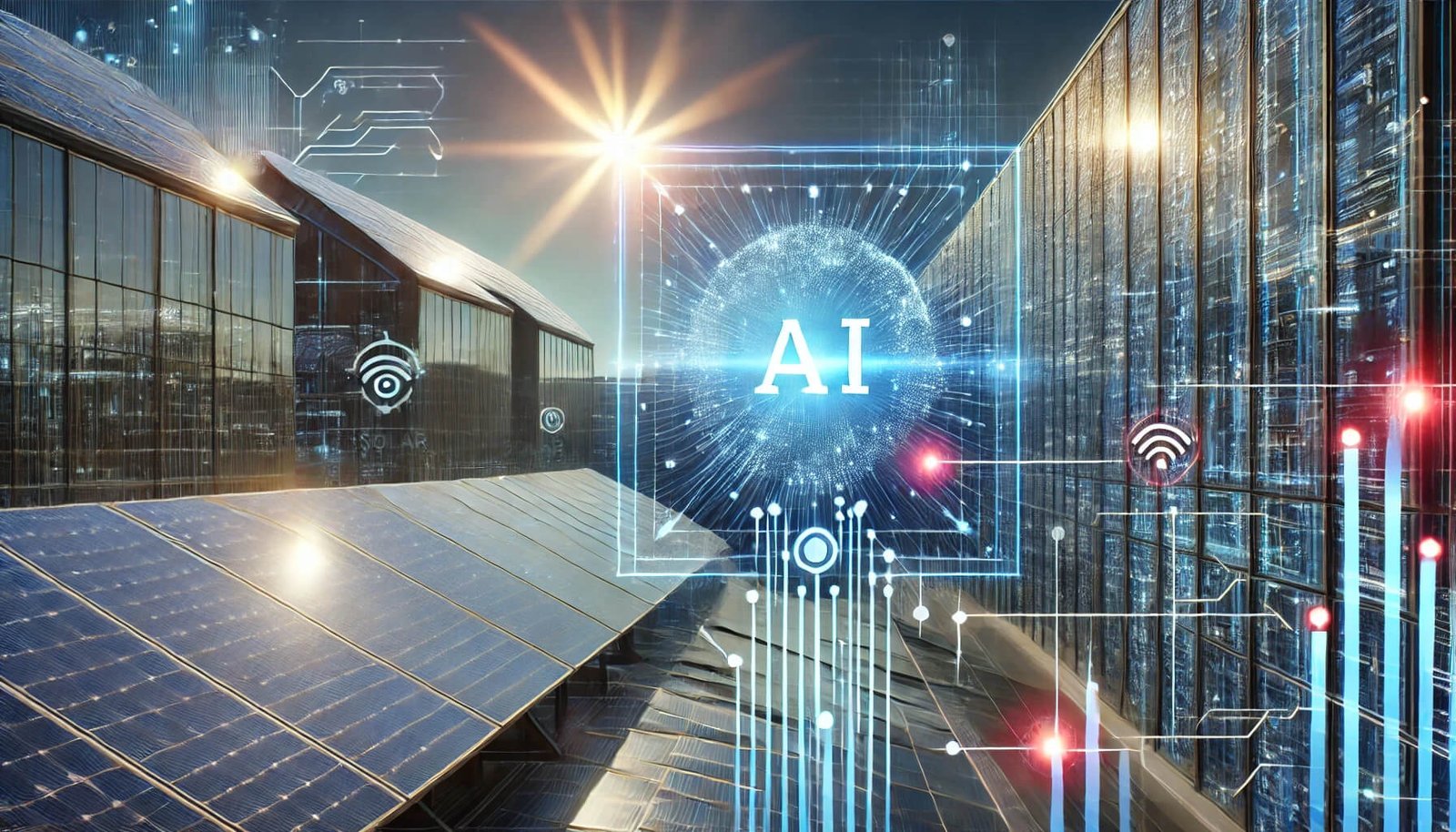Artificial Intelligence (AI) is changing the way we use renewable energy. In solar energy, AI is playing a big role in monitoring, prediction, and improving system efficiency. It helps homeowners, businesses, and industries get the most from their solar power systems. AI also reduces energy wastage, ensures better maintenance, and supports India’s clean energy mission.
This article will explain how AI is used in solar energy monitoring, its benefits, challenges, and future in India. We will also look at why AI-powered solar systems are the future of sustainable power.
What is AI in Solar Energy Monitoring?
AI in solar energy monitoring means using smart algorithms, sensors, and data analytics to check and control solar systems. AI collects real-time data from solar panels, inverters, and batteries. It then analyzes this data to predict performance, detect problems, and optimize energy use.
In India, where solar power is growing rapidly, AI helps reduce downtime and increases return on investment. It allows better decision-making for both homeowners and large-scale solar farms.
Why AI is Important in Solar Power Systems

- Accurate Energy Forecasting: AI predicts how much power solar panels will generate based on weather patterns, sunlight levels, and past performance.
- Smart Energy Management: AI balances solar power, battery storage, and grid usage. This ensures that homes and businesses use solar energy efficiently.
- Predictive Maintenance: AI detects small faults before they become big problems. This helps reduce repair costs and system downtime.
- Cost Reduction: By increasing efficiency, AI lowers the overall cost of solar electricity.
- Sustainability: AI helps India meet renewable energy targets by maximizing clean energy output.
How AI Works in Solar Energy Monitoring
1. Data Collection
Solar panels, inverters, and sensors collect data on sunlight, temperature, voltage, current, and system performance.
2. Data Analysis
AI software studies the data and compares it with past patterns. It can detect changes in performance and identify possible problems.
3. Predictions
AI can predict solar generation for the next day or even months ahead. This helps businesses plan energy use and reduce reliance on the grid.
4. Automation
AI can control how energy flows between solar panels, batteries, and the grid. For example, it can decide when to store excess energy or send it to the grid.
Also Read How Long Do Solar Panels Last? Understanding Solar Panel Lifespan and Performance
Benefits of AI-Powered Solar Monitoring in India
- Higher Efficiency: AI ensures panels and inverters work at their best capacity.
- Better Grid Stability: In a country like India, with frequent grid fluctuations, AI helps balance energy demand and supply.
- Lower Costs: Predictive maintenance reduces expensive breakdowns.
- Improved Solar ROI: Homeowners and businesses get faster payback on their solar investment.
- 24/7 Monitoring: AI systems work round the clock and give instant updates via apps.
- Carbon Footprint Reduction: AI helps maximize clean energy usage, cutting down emissions.
AI Applications in Different Solar Sectors
Residential Solar Systems
AI apps allow homeowners to check real-time solar output. They can track how much power is used by appliances, stored in batteries, or sent to the grid.
Commercial and Industrial Solar
Factories and offices with large solar systems use AI for energy planning. AI reduces electricity bills by deciding the best time to use solar, batteries, or grid power.
Utility-Scale Solar Farms
AI is vital for large solar parks in India like those in Rajasthan and Gujarat. It helps operators manage thousands of solar panels, predict power supply, and reduce wastage.
Challenges of AI in Solar Monitoring
- High Initial Cost: AI-powered systems can be more expensive than traditional monitoring.
- Need for Skilled Workforce: India needs trained engineers to manage AI-based solar systems.
- Data Security Issues: Since AI uses large amounts of data, there are concerns about data privacy.
- Integration with Old Systems: Many existing solar plants do not support AI easily.
Future of AI in Solar Energy in India
India is aiming for 500 GW of renewable energy by 2030, and AI will play a key role in this mission. With more smart grids, smart meters, and battery storage, AI will make solar energy more reliable. AI can also work with Internet of Things (IoT) devices to create fully automated solar homes.
For rural areas, AI-based microgrids can provide stable electricity. For cities, AI can support electric vehicle charging stations powered by solar.
FAQs on AI in Solar Energy Monitoring
Q1. Can AI really reduce solar maintenance costs?
Yes. AI predicts faults early, which reduces repair and replacement expenses.
Q2. Is AI only for big solar projects?
No. Even small rooftop systems can use AI-based apps for monitoring.
Q3. Does AI improve solar battery performance?
Yes. AI decides the best charging and discharging cycles, which increases battery life.
Q4. Are AI-powered solar systems expensive in India?
They cost more initially but save money in the long run through higher efficiency and reduced maintenance.
Q5. What is the future of AI in Indian solar projects?
AI will be common in both residential and commercial solar systems. With government support, it will boost renewable energy adoption.
Conclusion
AI in solar energy monitoring is not just a trend. It is the future of smart energy management. In India, where solar power is a big part of the renewable mission, AI ensures maximum efficiency and cost savings. From predicting energy generation to reducing downtime, AI brings real value to homeowners, businesses, and industries.
As solar adoption grows in India, AI-powered monitoring will make clean energy more reliable, affordable, and sustainable. Investing in AI-based solar systems today means preparing for a greener and smarter tomorrow.










